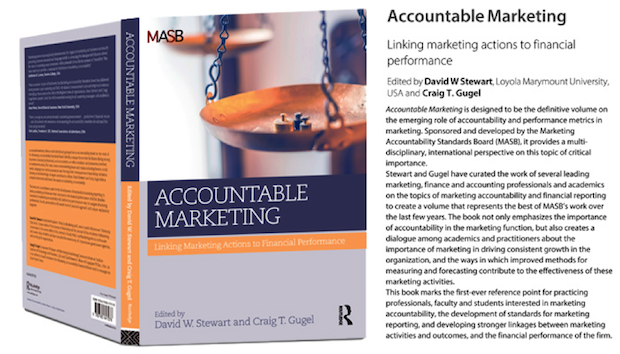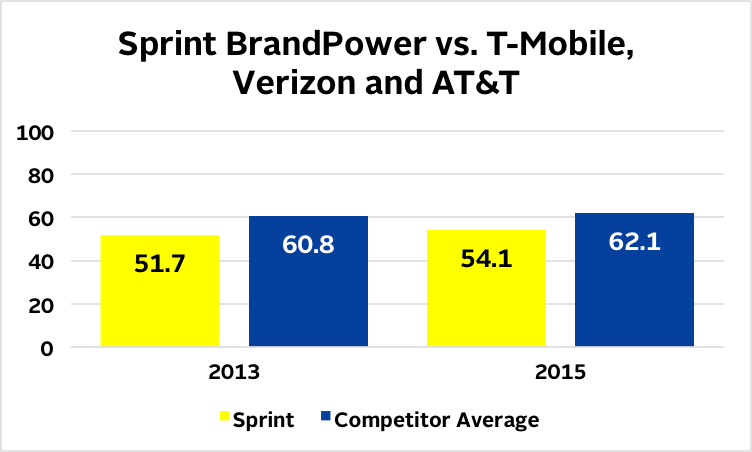With the New Year upon us, many have taken the time to reflect upon the changes of the past year. Given just how quickly the worlds of advertising and marketing move, it’s important to take stock of the drivers that continue to shape and influence the way brands create value, both for their organizations and their customers.
‘Innovation’ and ‘disruption’ seemed to be the buzzwords of 2015, but for all the noise these catchphrases have created, it’s worth asking: Is brand innovation and disruption simply a trend or part of something bigger? My vote is for something bigger that is fundamentally shifting our relationship with brands and the experiences they create. In the spirit of reflection, here are five major ways the branding landscape evolved in 2015, and what these changes will mean for marketers as they seek to create new and ‘disruptive’ brand experiences in the year ahead.
The shift from the connected consumer to the connected product
The rise of the Internet of Things (IoT), coupled with the growing spotlight on Design Thinking – a form of customer-centric design – has resulted in products never before seen. In the race to build the first truly connected smart home, Apple’s HomeKit will be going head-to-head with Amazon’s Echo – and despite being at the center of a few April Fool’s jokes when it was introduced, Amazon’s Dash Button illustrated, if anything, that the IoT is poised to create profound changes to the way consumers shop both online and off. In 2016, the biggest challenge for brands won’t necessarily be in creating a new suite of connected products, but in transforming them from novelties to true utilities, offering a functional as well as an emotional benefit to the end user.
Apparel stands out as a category prepared to make transformative shifts on this front. While clothing with sensor technology is still in its infancy, major brands including Under Armour, Ralph Lauren and Levi’s have been working to develop their offerings. Ralph Lauren revealed its smart shirt, PoloTech, at last year’s US Open tennis tournament, made with a “second-skin” fabric that tracks biometric stats like heart rate, steps taken, breathing depth and energy exertion. Many leading brands, from Apple to Google and Nike, are also investing in artificial-intelligence technology that reads people’s emotions by analyzing facial expressions – expect major things on this front from hyper-targeted advertisements to virtual dressing rooms and virtual personal shoppers as part of the in-store experience.
Brands as content creators – and social media’s growing foray into e-commerce
2015 was a banner year for content marketing. While continuing to disrupt the hotel industry, Airbnb’s one-off print magazine, Pineapple, made headlines and the company is now in talks with Hearst to launch a new magazine as a joint venture.
On the traditional hospitality front, Marriott’s in-house content studio expanded to take on film. In March, the company launched its first original short “Two Bellmen,” a 17-minute action-comedy starring Henry Simmons from Marvel’s “Agents of S.H.I.E.L.D” and Miles Brown from ABC’s “Black-ish.” David Beebe, Mariott’s VP of creative content and global marketing who leads the 65-person studio, explains Marriott’s approach with three Cs: “Scaling content, then building a community around that content, and driving commerce.”
Driving commerce with content marketing will be high on marketer’s to-do list in 2016. According to the Content Marketing Institute, approximately 80% of B2C marketers plan to produce more content in 2016 compared to 2015. In the B2B space, 51% of marketers plan to increase their content budget in the next 12 months.
On the social media front, brands will be increasingly turning to Instagram, Facebook and Pinterest to help boost consumer loyalty and drive sales. Across channels, these sites are getting smarter about offering ad space and tools that allow businesses to integrate their content with images and inspirational posts, giving consumers the opportunity to purchase the products seen directly within these social pages. As social media sites grow to become micro e-commerce platforms, marketers will need to focus on four crucial components to establish their footing and keep consumers coming back for more: the quality of the content; user experience and functionality; customer engagement and community building; and lastly, brand narrative and messaging. Companies need to ensure that their brand’s personality, values and voice are “on-brand” and complement the host of experiences through which customers are already engaging with their brand – both online and off.
Design Thinking and its movement to the C-suite
While the concept of Design Thinking isn’t new, in 2015 we saw it become more fully embraced by the C-suite. No longer just revered by product and service designers, C-level executives are now applying the principles of design to better manage change and help solve some of their most pressing challenges. As Indra Nooyi, PepsiCo’s CEO aptly said in an interview with *Harvard Business Review*, “Design leads to innovation and innovation demands design.”
Nooyi stepped into her role as CEO in 2006 and in 2012 she hired Mauro Porcini, the company’s first-ever chief design officer, to oversee design-led innovation across all of PepsiCo’s brands. Porcini has been instrumental in launching the first output of Pepsi’s design-thinking approach, the Spire family of vending equipment that allows customers to customize their choice of beverage, adding flavors and suggesting new ones with every purchase.
Tech giant IBM is also on a mission to transform its corporate culture and service offerings by instilling a Design Thinking mentality throughout the entire organization. “There’s no longer any real distinction between business strategy and the design of the user experience,” said Bridget van Kralingen, the senior vice president of IBM Global Business Services, in a statement to the press. By the end of 2015, the company brought on nearly 1,110 new designers, recruiting from top schools including Stanford, Carnegie Mellon, the Rhode Island School of Design and Parsons School of Design and is continuing to train employees across functions on how to apply design thinking to business strategy.
Innovation by Collaboration – the growing importance of brand partnerships and its impact on business success
As Tenet Partners examined in its 2015 Top 100 Most Powerful Brands report, some of the fastest-rising brands invested heavily in R&D, strategic acquisitions and collaborative brand partnerships. As technology continues to blur industry lines, companies will increasingly turn to sectors and categories outside of their immediate category, not only seeking inspiration, but also to forge more meaningful connections with audiences by driving innovation to generate business results.
Take Google, for example. Before it announced a restructuring effort to become Alphabet, the company acquired smart home product manufacturer Nest. In March, Google announced plans to partner with Johnson & Johnson to create a robotic-assisted surgical platform. Both moves crossed category boundaries in an effort to generate new value. In another teaming of two very different organizations, IBM and the Institute of Culinary Education (ICE) teamed up and launched a cookbook, *Cognitive Cooking with Chef Watson*. It was the result of a three-year partnership that brought ICE chefs and IBM researchers together to explore data’s effect on creating the perfect recipe.
Collaborations such as these illustrate that in order to thrive, brands cannot go it alone. Strategic partnerships that reach new audiences and enter into new categories while unlocking value for businesses, customers and shareholders will serve brands well now and well into the future.
Brands responding to political and social events – finding support, not backlash
As brands continue to engage in the places where their customers are, most notably online, it’s become second nature for brands to respond in real time to the most hot-button political and social news stories of the day – a bold new idea for the brand marketers of yesteryear.
In June, when the Supreme Court announced a historic ruling legalizing gay marriage across the country, brands hailing from the technology sector, financial services, retail and consumer packaged goods industries were quick to voice their support, meeting the admiration and “liking” of their customer base. The tragic terrorist attacks in Paris last November also resulted in a quick response, with brands adopting the #peaceforparis hash tag and logo created by French graphic designer Jean Jullian along with other expressions of solidarity.
However, not all brands that jumped into political and cultural dialogues received positive reactions. Starbucks’ “Race Together” initiative was met with a wave a criticism when it was launched. The campaign – which aimed to spark a national conversation about race relations by having baristas write the phrase “Race Together” on Starbucks’ cup – was seen as an ill-conceived attempt at engagement, incapable of bringing about meaningful or lasting change.
As brands continue to take on political and socially charged issues, whether in the form of 140-character tweets or as a comprehensive corporate citizenship program, my predication is that they’ll be more attuned to incorporating their unique brand DNA and positioning into the experience. Execution will be everything and the right balance of authenticity, engagement, and responsiveness will go a long way in creating memorable engagements that win the hearts and minds of consumers, whether it’s through clever and emphatic alterations of their logo or homepage, or inviting consumers to participate in their effort through user-generated content.


